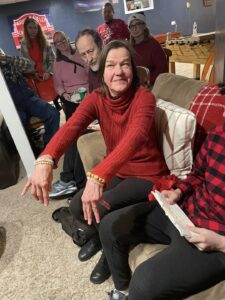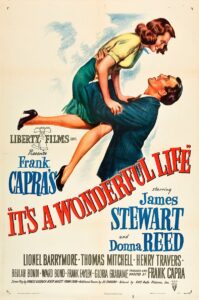Mondays with Mike: Lacking resolution, and the case of the Argentinian Rosá
January 1, 2024 • 16 Comments • Posted in Mike Knezovich, Mondays with MikeA happy 2024 to you all, and thanks for stopping by.
I am not doing Dry-uary but I wholly support all who are. Me, I may drink more because you know, it’s an election year. Numbing is in order.
Our holiday season starts in earnest on December 23, Beth’s birthday. We went to Hamilton, and then to dinner at a funky, delightful place called Rootstock in the Humboldt Park neighborhood. Our friend Val, who works across the street from our apartment at Printers Row Wine Shop, works Saturday nights at Rootstock, which aligned very nicely on December 23. She and the owner took great care of us and our friend Ruth. Beth’s birthday was just about perfect.
The next morning things went off the rails a bit: Beth awoke in the 5 o’clock a.m. hour, as she always does, to feed Luna. And, as she always does, Beth took her morning medications. One of those meds, a pesky little time-release capsule, decided not to go down all the way. Heimlich maneuvers, water, calisthenics—nothing worked. She never had trouble breathing, thank God, but the dang thing just sat there and burned in her throat.
She finally dozed off and when she awoke, the pill seemed to have dissolved but the irritation was front and center. This is already TMI but I’ll fast forward and say that a week after her birthday and one visit to an urgent care, we spent 11 hours at the emergency room and left with a prescription for two medications and not a whole lot of instant gratification.
But, as of this writing, those two meds seem to be a good idea and Beth is feeling better than she has for over a week and once we get some more sugar-free pudding in her we’ll be off to the races. (She couldn’t eat this past week because it was so hard to swallow.)
OK, let me say that I feel wholly lucky that we have wonderful friends and health insurance. That the nurses and doctors at Northwestern were fantastic, as were the intake folks and other staff. But, I must also say what I’ve been saying since my twenties and we were navigating the health care system because of Beth’s eyes and Gus’ many maladies—“system” is the biggest freaking euphemism since Reagan coined the term “peacekeeper” for a nuclear missile.
I’ll stop there for fear of starting 2024 on the wrong foot. The bottom line is we’re fortunate, Beth is feeling better, and we’re both exhausted.
In a period when Beth was out of bed and on the couch, we watched an absolutely fantastic documentary on Netflix called “American Symphony.” The foundation of the story told is the process that the multitalented Jon Batiste followed in writing a symphony. That part of it is powerful—watching him collaborate to create an unconventional orchestra to play an unconventional piece of music is fascinating and gives shape to the ephemeral term “creativity.”
The documentary would be good if that’s all it did—but the whole process is spliced with Batiste’s complicated personal situation—that being his girlfriend-eventually-wife being treated for a relapse of leukemia. It’s one of those experiences that’s real, heartbreaking and inspirational all at once.
Finally, I invite your help in helping Beth and me solve a mystery. Sometime around her birthday we got notice from our building that a package was waiting at the desk. It turned out to be a big box, and our door person, who’s seen the two of us through various maladies over the years, put it on a hand truck and brought it to our place. (We love you Chauncey!)
It turned out to be a case of rosé wine from Argentina. It’s called Rule of 3, it’s made from Malbec, and it’s delicious.
The problem? The card that came with it said only, “Merry Christmas!” No name, no hint at who gave us the lovely gift.
So, if you are the generous, thoughtful soul who sent it and have been wondering whether we got it, we did and thank you! And please, raise your hand!
Here’s to a safe, healthy, and peaceful 2024. A man can dream.






